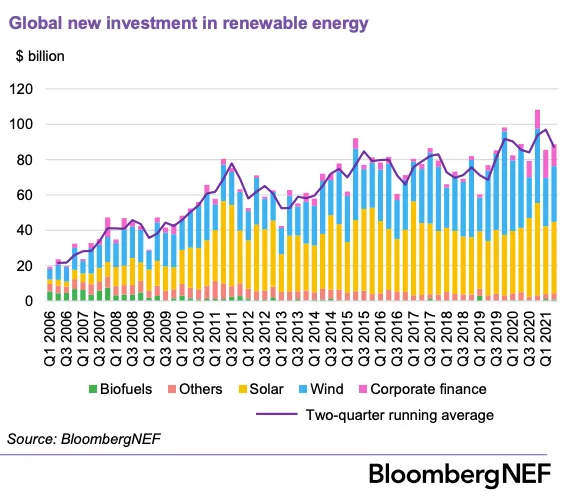Written by Sofia Tomljanovic

At the COP26 Glasgow Climate Pact, a follow-up to the Paris Agreement in 2015, 120 world leaders came together for immediate action to limit the rise of global temperature to 1.5 degrees Celsius, with pacts against deforestation, methane gas pollution and coal financing. The exact agreements are summarized on the United Nations Climate Action page. Switching from fossil fuels to renewable energy is becoming a priority worldwide, considering coal burning alone is the biggest contributor to human-induced climate change.
Notably, the United States and China joined in a joint declaration towards enhancing climate action. Among other agreements, they intend to cooperate and support “distributed generation policies that encourage the integration of solar, storage, and other clean power solutions closer to electricity users, and energy efficiency policies and standards to reduce electricity waste.” Ernst & Young consultants continue to place these two countries first and second in The Renewable Energy Country Attractiveness Index (RECAI), where they rank the top forty markets in the world for investment attractiveness in renewable energy.
The 2022 renewable energy industry analysis for the United States was written by US Renewable Energy Leaders Marlene Motyka and Jim Thomson, as well as the executive director of the Deloitte Research Center for Energy & Innovation, Kate Hardin. In it, five prosperous investment trends are discussed. For example, the growing interest in next-generation clean energy technologies with opportunities such as “the US Department of Energy’s (DOE) ‘Energy Earthshots ’ initiative [that] aims to reduce the costs of green hydrogen and long-duration energy storage by 80% and 90%, respectively, by 2030.” Moreover, solar energy is receiving new configurations and business models that led to “an 85% cost decline over the past decade in solar photovoltaic systems.”
For China, the renewable energy sector is also in the spotlight. In Dominic Chiu’s research article The East Is Green: China’s Global Leadership in Renewable Energy, he discusses the unavoidable air pollution in the country that makes their interest in shifting their energy sources legitimate. He states, “a UC Berkeley study concluded that air pollution led to an estimated 1.6 million deaths yearly, roughly 17 percent of all deaths in the country. A University of Chicago report found that suspended particulates air pollution is causing half a billion residents in northern China to lose an average of 5 years of life expectancy.”
The International Energy Agency report titled An Energy Sector Roadmap to Carbon Neutrality in China shows a detailed plan for the country’s transition to clean energy. The study looks at the 14th Five-Year-Plan for 2021–2025 announced by the country that promises an 18% reduction in CO2 intensity, a 13.5% reduction in energy intensity and “a non-binding proposal to raise the non-fossil fuel share of total energy consumption to 20% by 2025 (from around 16% in 2020)” among other targets. If they achieve these short-term policy targets, “the IEA projects that China’s CO2 emissions from fuel combustion will be on track to plateau in the mid-2020s and then enter a modest decline [by] 2030.”
The geopolitical aspects of the energy transfer are exhaustive, and there needs to be proper management of the millions of tons of waste produced by the infrastructure needed for renewables. Furthermore, the commitment to the green pacts made in COP26 needs to be closely observed. Although the United States and China have other extensive problems to tackle from an environmental perspective, seeing the two most powerful countries in the world in terms of GDP develop concrete plans to become greener is hopeful.
